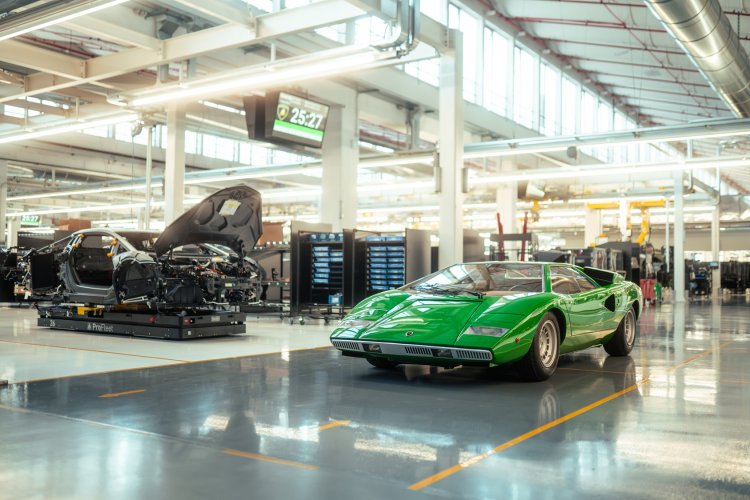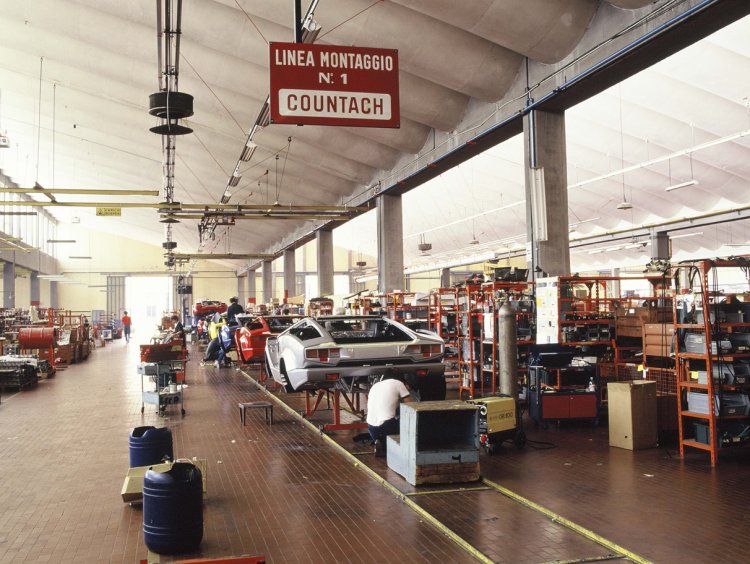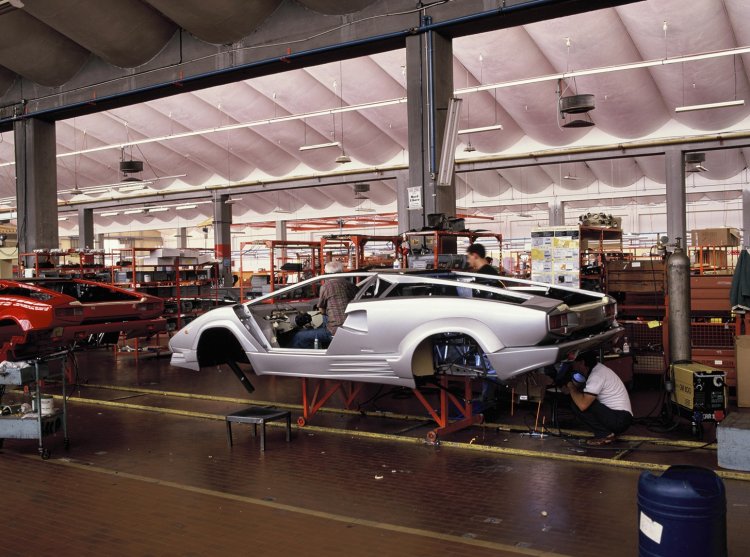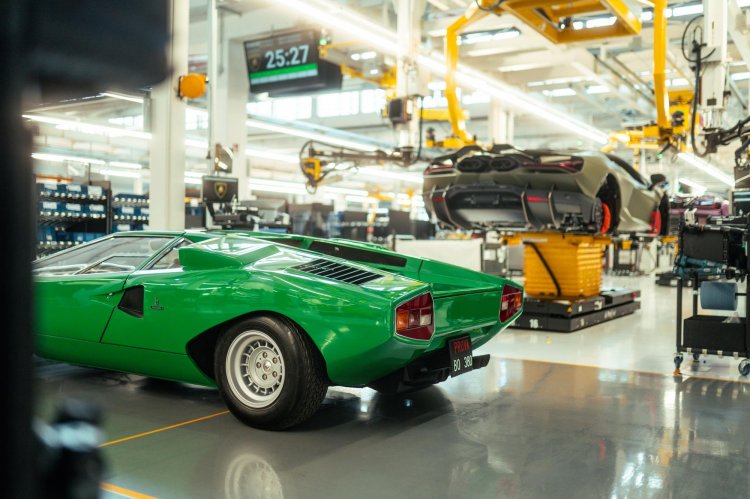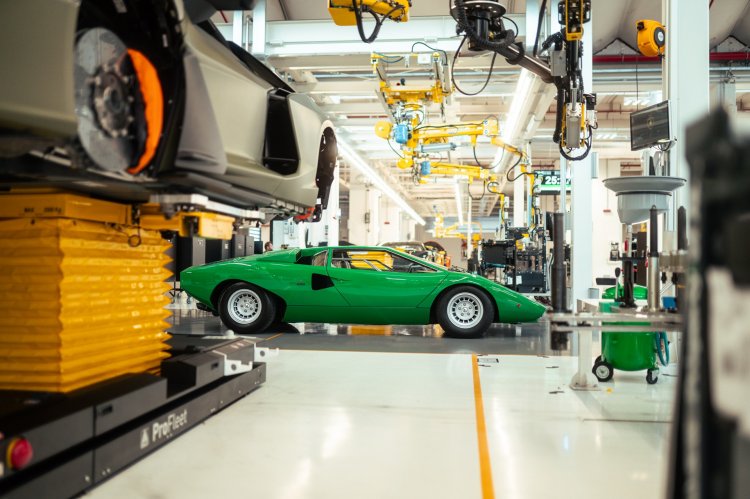The year 2024 marks a significant milestone in automotive history—50 years since the Lamborghini Countach first rolled off the production line in Sant’Agata Bolognese. This revolutionary model, which remained in production for 16 years, set the stage for Lamborghini's future and cemented its status as a legendary marque. The Countach wasn't just a car; it was a symbol of innovation, craftsmanship, and bold design that continues to influence Lamborghini's offerings even today.
The Birth of a Legend
The Lamborghini Countach was introduced as a concept at the 1971 Geneva Motor Show under the designation LP 500. Its striking design and innovative engineering captivated the audience, prompting Lamborghini to turn the concept into a production model. However, transforming the LP 500 into a road-ready vehicle required three years of intense development, during which several prototypes underwent rigorous testing. Finally, in March 1974, Lamborghini began mass production of the Countach LP 400, marking the birth of a legend.
One of the Countach’s most notable contributions to Lamborghini's legacy was its pioneering production process. For the first time, Lamborghini decided to produce the bodywork in-house at its Sant’Agata Bolognese factory, marking a significant departure from its previous practice of outsourcing bodywork to external coachbuilders. This shift allowed Lamborghini to exercise greater control over the design and quality of its vehicles, laying the foundation for the high standards the brand is known for today.
The No.1 Countach Assembly Line
The original Lamborghini factory, completed in 1966, spanned 12,000 square meters and housed production lines for both mechanical parts and car assembly. In 1968, the factory expanded to include three new industrial buildings, adding 3,500 square meters of covered area. This factory, though significantly different today, still houses the very assembly line where the first Countach was produced—a line now responsible for producing the Lamborghini Revuelto, the brand’s latest V12 plug-in hybrid.
During the Countach’s era, the assembly process was a meticulous, hands-on operation. Body panels were hand-beaten, checked against wooden templates, and carefully welded together. Each part was individually crafted and slightly unique, making the final assembly a highly skilled task. The body, still in raw aluminum, was then married to the frame and gradually fitted with mechanical components as it moved along the assembly line. The Lamborghini Upholstery Department also played a key role, initially collaborating with external suppliers before becoming fully autonomous in the production of leather upholstery—a tradition that continues today with Lamborghini’s Ad Personam customization program.
From Countach to Revuelto: A Legacy of Innovation
Despite the half-century that separates the Countach from the Revuelto, many core elements remain the same. Both models feature a rear-mounted V12 engine in a longitudinal configuration, a layout that has become synonymous with Lamborghini's high-performance ethos. The iconic "Scissor" doors, introduced with the Countach, have become a hallmark of Lamborghini’s V12 models, including the Revuelto. The continuity in design is also evident in the "Countach line," a subtle visual cue that runs from the front fender to the cockpit roof and ends at the rear spoiler. This design element has persisted through successive models, including the Diablo, Murciélago, and Aventador.
Production volumes have changed dramatically over the years. During its 16-year production run, Lamborghini built 1,999 Countach units. In contrast, the Diablo saw 2,903 units produced over 11 years, the Murciélago 4,000 units in nine years, and the Aventador over 11,000 units in just 11 years. Yet, despite these differences, the Countach and Revuelto are united by their birthplace and the shared spirit of innovation that defines Lamborghini.
A Walk Through Countach History
The Countach underwent several evolutions during its production run, each iteration adding to its mystique and appeal. The original LP 400 (1974-1978), with its unadorned fenders and distinctive "Periscopio" roof design, was limited to just 152 units. The LP 400 S (1978-1982) introduced wider fenders, low-profile Pirelli tires, and an aerodynamic front spoiler, with 235 units produced. This design language became a defining feature of the Countach for the next decade.
In 1982, the 5000 S version debuted, featuring a larger 4.8-liter V12 engine and subtle aesthetic updates, with 323 units produced. The Countach Quattrovalvole (1985-1988) introduced a 5.2-liter engine with a four-valve-per-cylinder configuration, requiring a distinctive "hump" on the hood to accommodate the larger powerplant. This version saw 631 units produced. Finally, the Countach 25th Anniversary edition (1988-1990) celebrated Lamborghini's 25th anniversary with extensive aerodynamic revisions and the introduction of carbon fiber components, with 658 units produced.
The commercial success of the Countach was a slow burn, but it eventually became a cultural icon. Its presence in films, on posters, and in the dreams of car enthusiasts helped Lamborghini weather the challenges of the 1970s and 1980s, setting the stage for the brand’s future success.
Conclusion
As Lamborghini celebrates the 50th anniversary of the Countach, the model's legacy lives on—not just in the cars that followed it, but in the very DNA of the brand. The Countach was more than just a car; it was a revolution that redefined what a supercar could be and set Lamborghini on a path to greatness that continues to this day.
